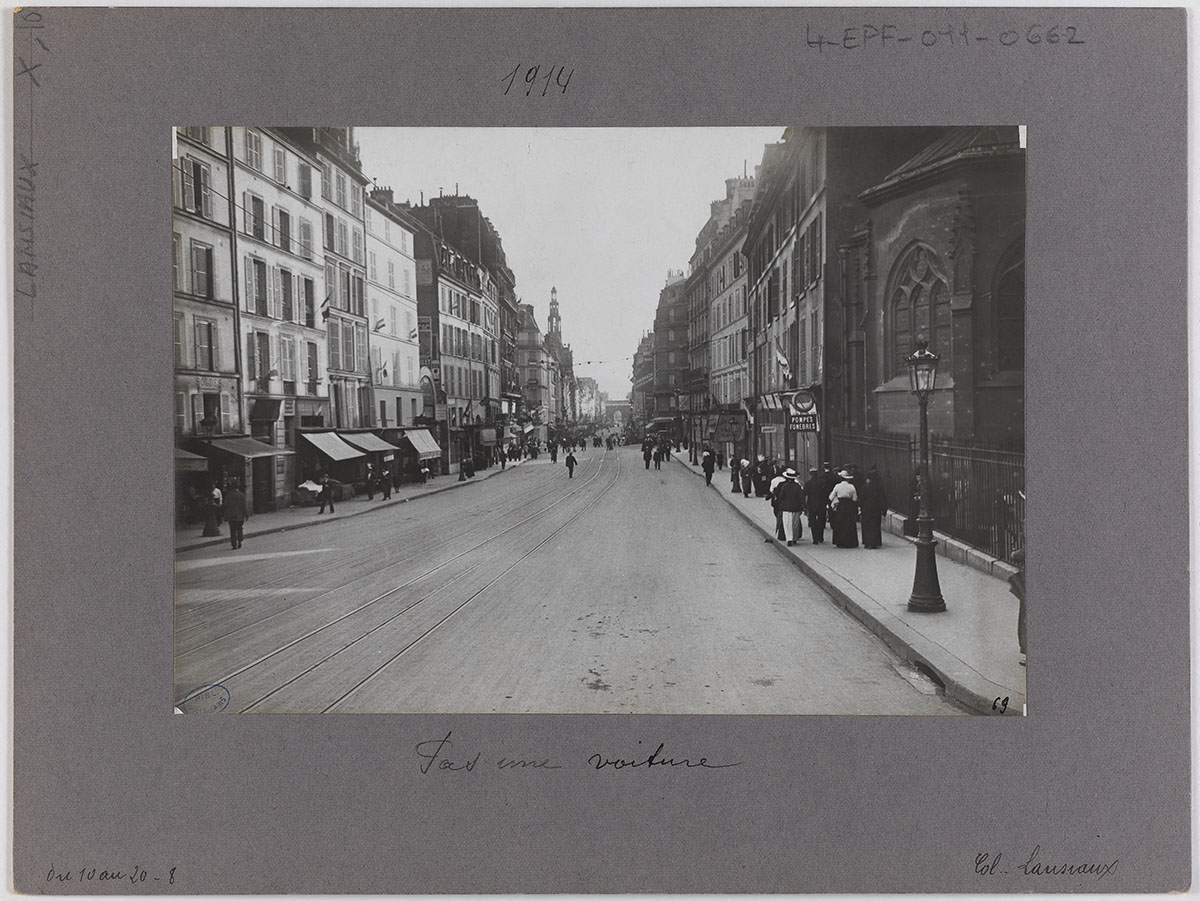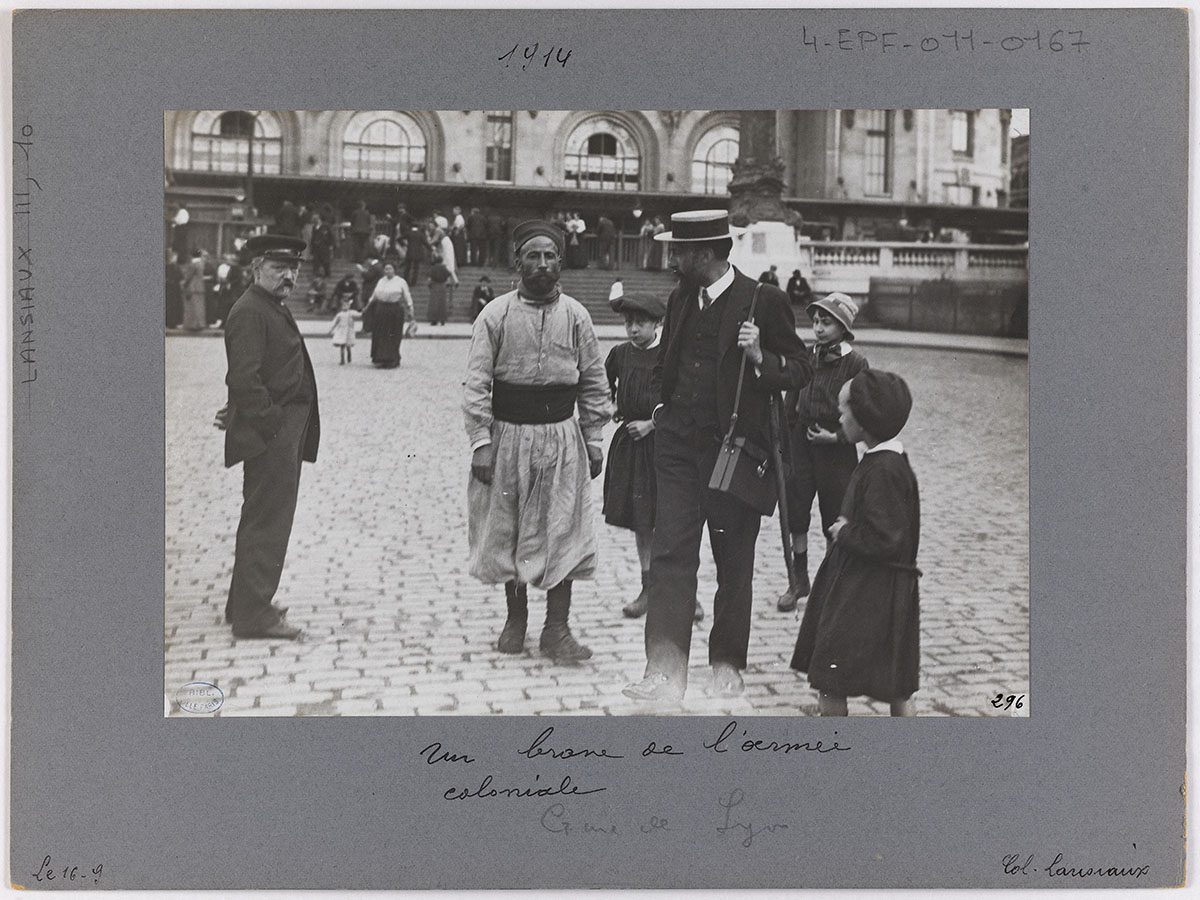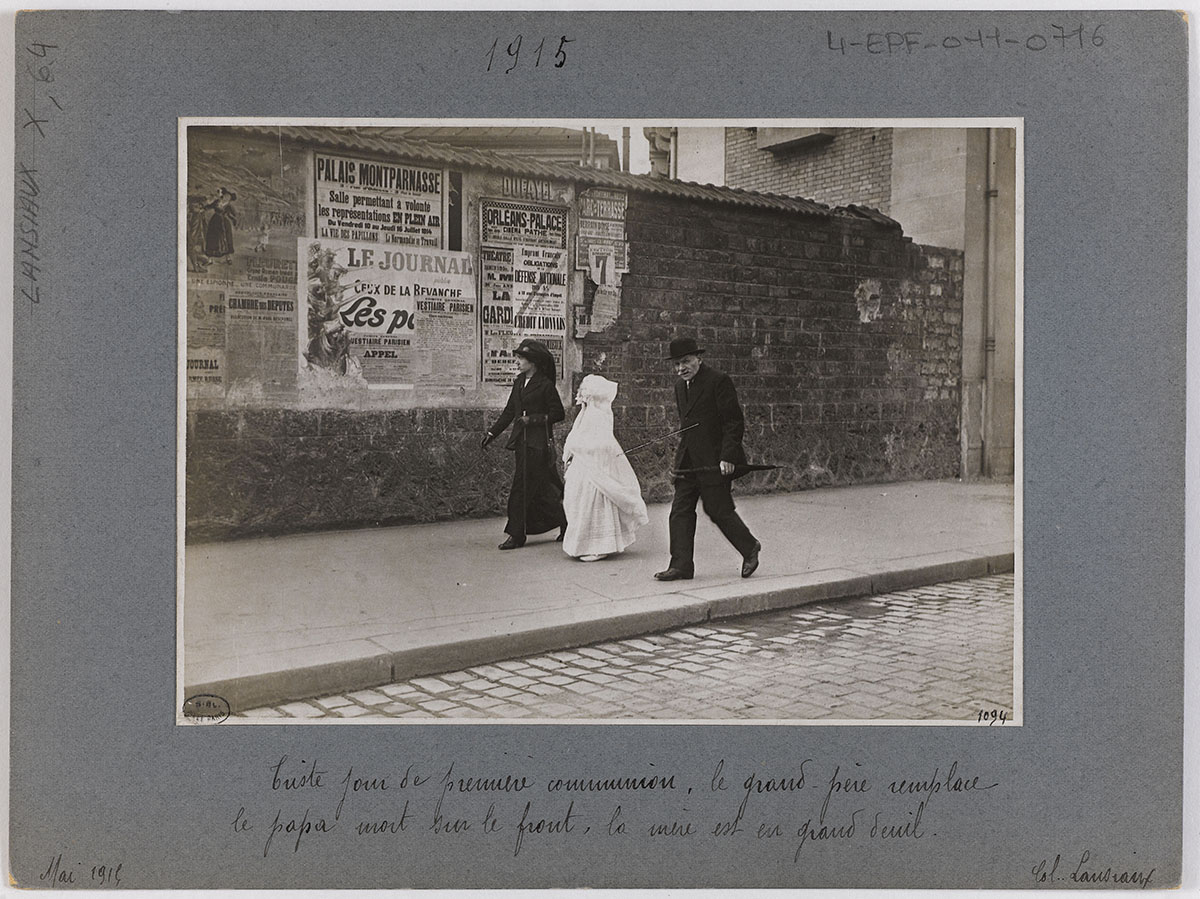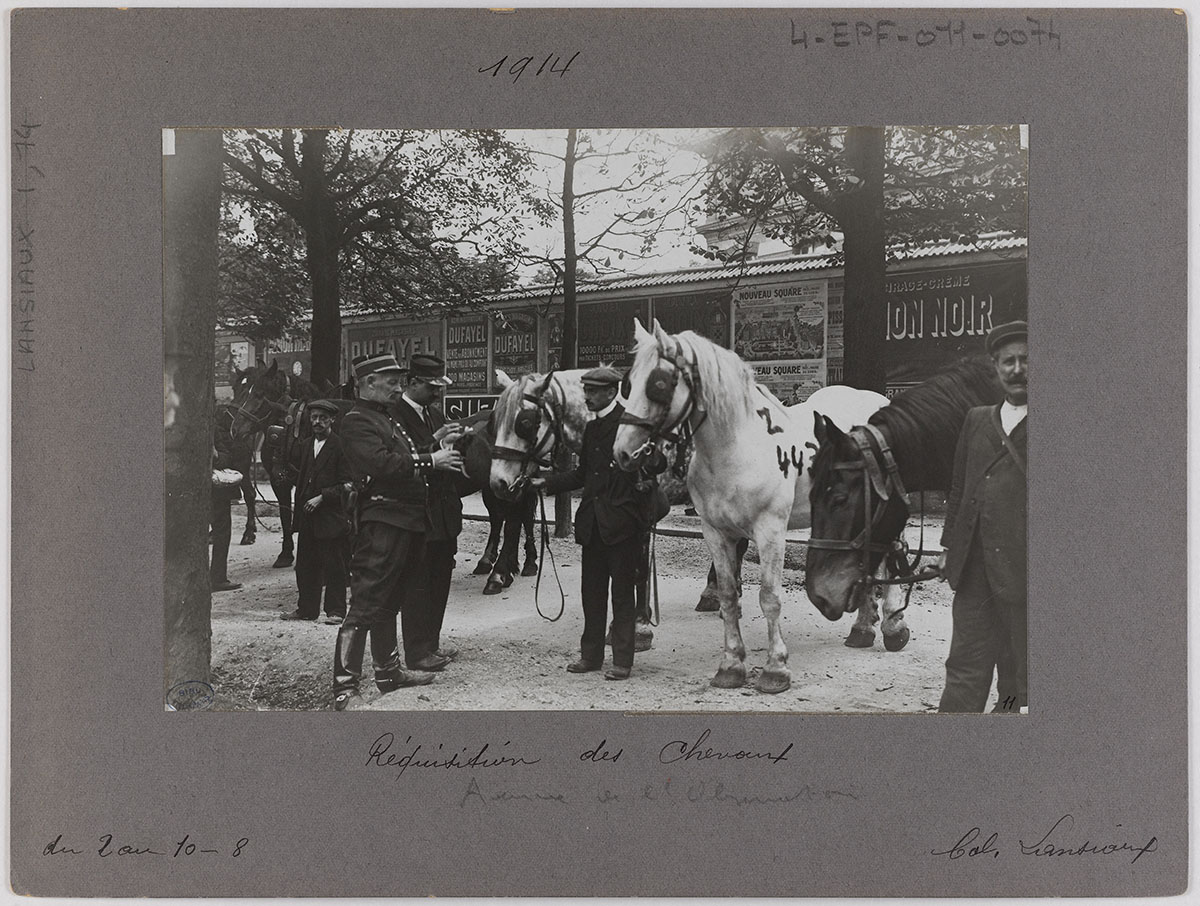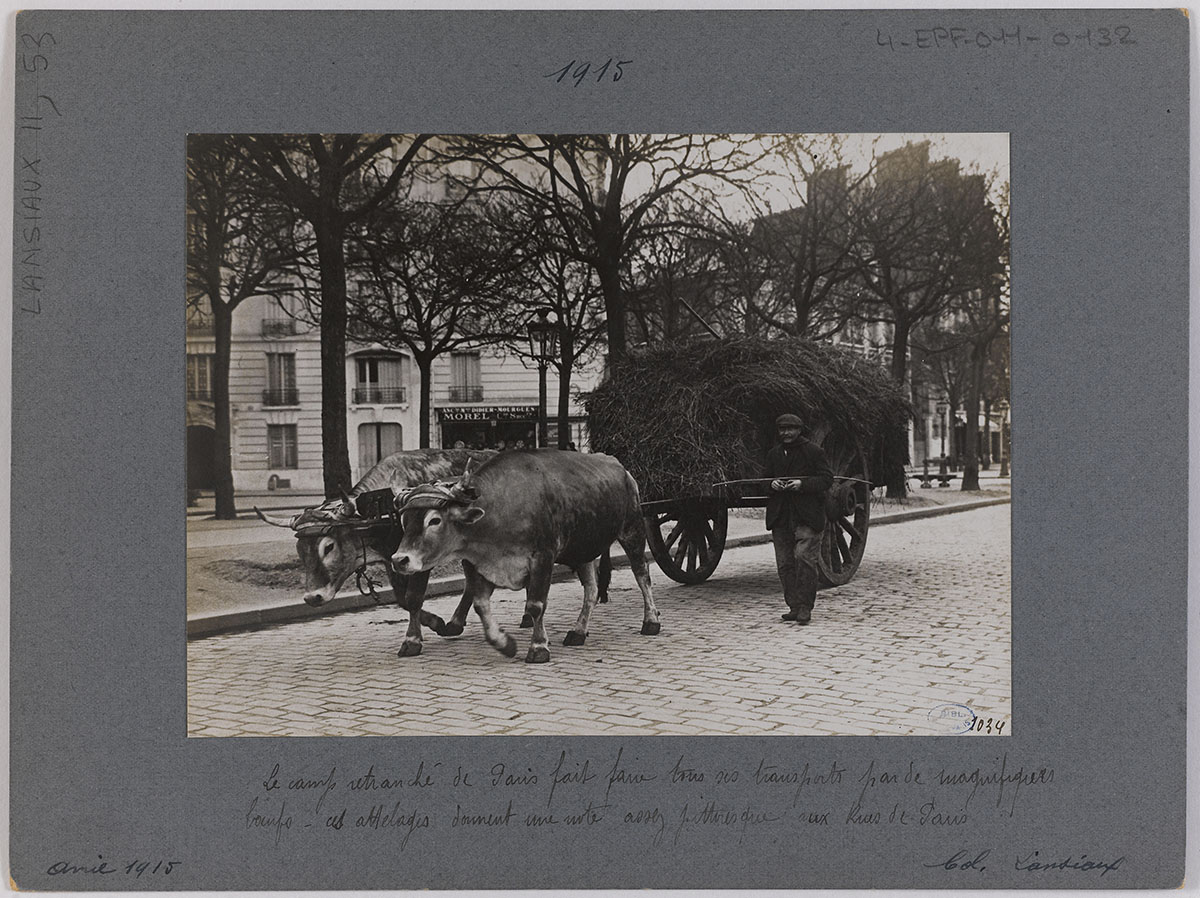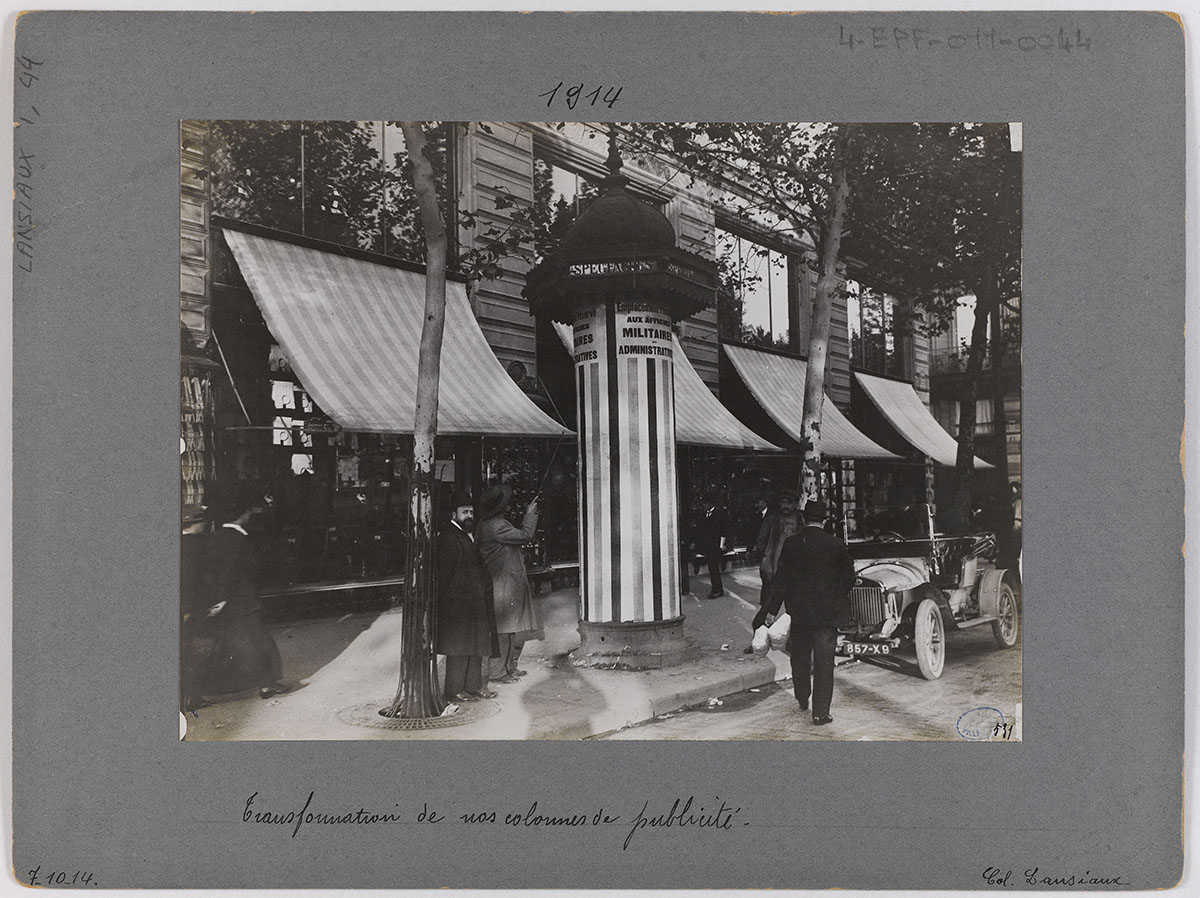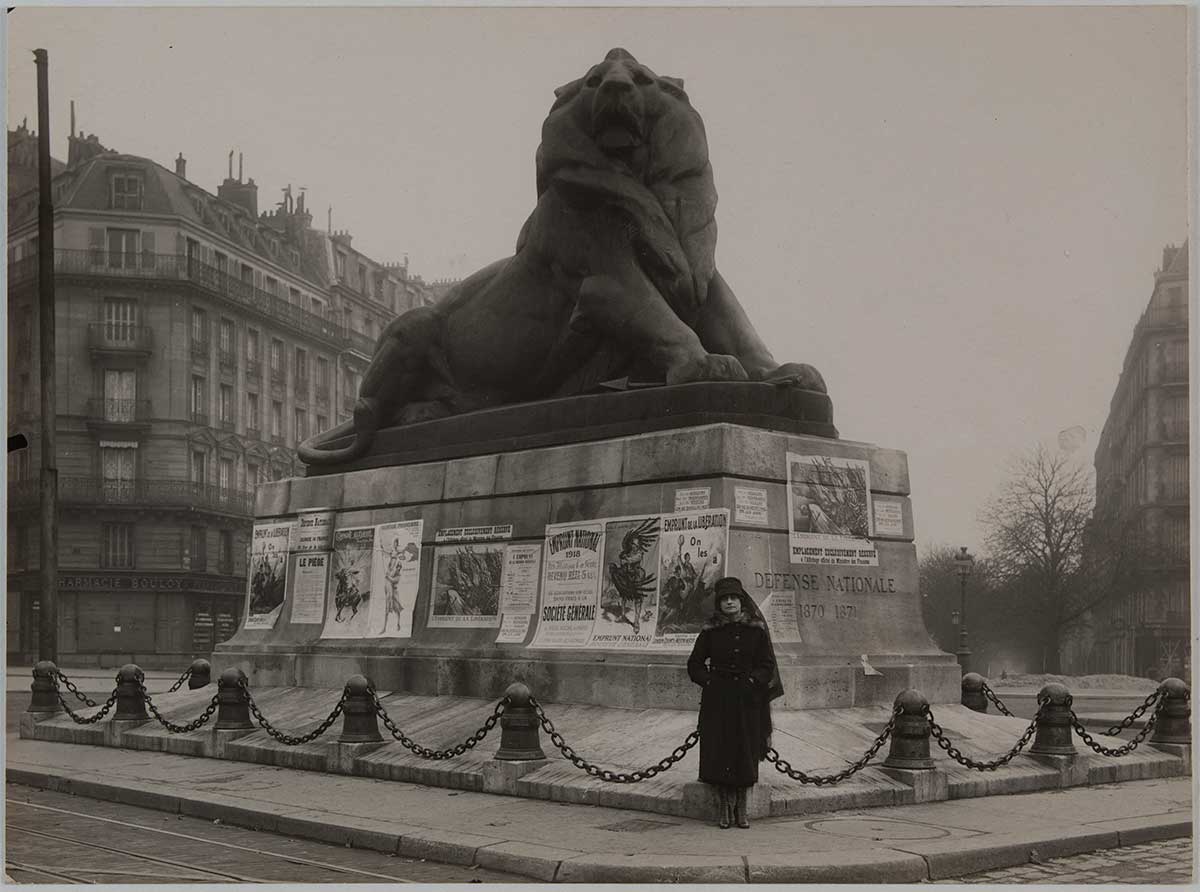When the country was mobilized on August 2, 1914, the photographer Charles Lansiaux left his studio in the fourteenth arrondissement in order to capture the crowds as they flowed towards the city’s railway stations—their euphoria and emotions, as well as their imminent separations and departures. Ineligible for mobilization because he was born in 1855, Lansiaux renewed his photographic excursions in the days that followed. Beginning in September 1914, he intuitively realized that his photographs could develop into a series that would tell the entire story of the war. He called his series, which would last throughout the length of the conflict “Aspects de Paris pendant la guerre” [Aspects of Paris during the War]. His second intuition was to offer to sell his wartime collection to the Historical Library of the City of Paris. Because it consisted of photographs, his collection was able to show daily life in Paris and the Parisian mindset far more effectively than other kinds of documents. His images showed evidence of changes that were at first scarcely noticeable--the absence of men or cars in the streets, more obvious signs like the sight of uniforms from many different countries on café terraces, or the stigmata-like craters left behind by mortar strikes.
Between 1914 and 1918, the library purchased nearly one thousand proofs from Lansiaux. The wide range of subjects and evident freedom of tone make it obvious that Lansiaux had embarked on a personal photographic project to record daily life in Paris, and that he sold it primarily in the name of preservation. Hand-written legends, often humorous, sometimes ironic or critical, accompanied the photographic proofs, which were matted and mounted. His collection brought him to the attention of the Commission of Old Paris, which he served as an official photographer from 1916 to 1921. His pictures from this period constitute a remarkable inventory of the city’s buildings that is part of the archeological Casier [file, collection] established in 1916. Some of his commissioned work reveals the effects of the war on the urban heritage, whether from bomb damage or from defacement of public monuments by over-zealous poster campaigns.
Earlier in his career, Charles Lansiaux had contributed to the technical development of instant photography and to progress in controlling shutter speed, as had Janssen, Marey and the Lumière brothers. He put his technical skills to good use in his spontaneous photographs of street scenes during the war, although the presence of extras who reappeared in some of his photo series clearly shows that some of them were reconstructed.











